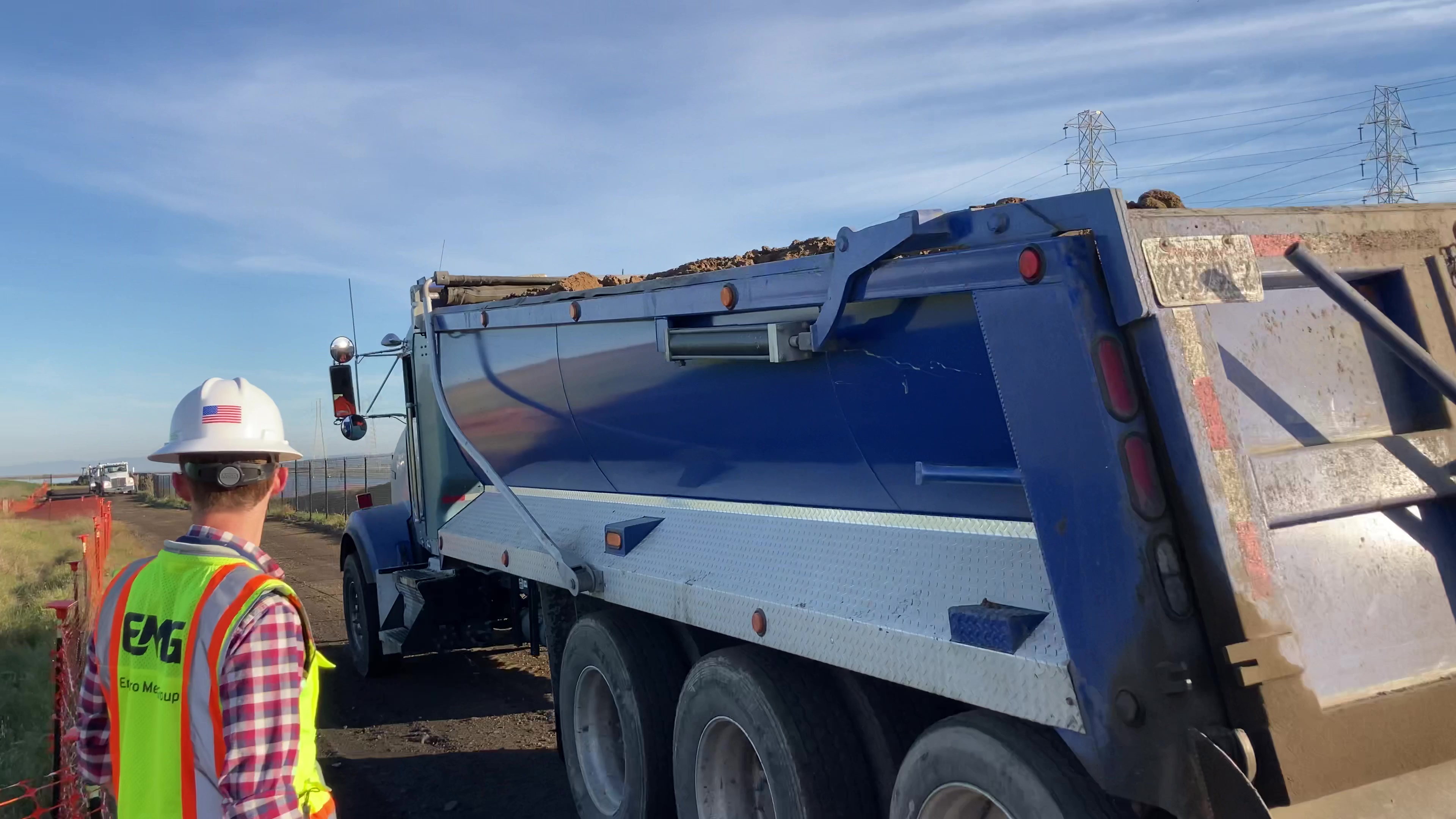Our Friend, The Dirt Broker
In the late 1980’s, I spent some time working at a Lehman Brothers office on Montgomery Street. So, until recently, when I heard the word “broker,” I thought of suspenders, slicked-back hair, and dress shirts with white collars even when the shirts themselves are blue or pink.
What I certainly did not think of were work boots, hard hats, and enormous piles of dirt.
And yet, among all of the important roles in the South Bay Salt Pond Restoration Project, one of the most important is that of “the dirt broker.” Yep – it’s a thing.
In our Project, we move a lot of earth: we raise and improve parts of old salt pond berms, we build islands, and we construct habitat transition zones to connect pond bottoms to levees or uplands across gently sloped areas instead of steep levee side slopes. All of that takes a lot of dirt (also known as “fill material” or just “material”), usually on the order of a few hundred thousand cubic yards at each project location. To help thanksyards.
So…that’s a lot of material. And we usually get it for free. Here’s how that works:
Anytime there is a construction project that will involve excavation, there is some dirt produced. If it’s a swimming pool in someone’s backyard, it’s just a little bit, but if it’s an underground parking garage or a foundation for a multi-story office building, it’s a lot. And in the absence of another alternative, most of that dirt gets hauled to a landfill to be disposed. The developer or owner of the source project must pay a trucking company to haul it away and a landfill to accept it. Those are two high costs.
But in recent years, a new alternative has been identified. Across our economy and society, there is now interest in turning all sorts of “waste products” into input goods for another process. In our case, someone else’s waste dirt becomes our habitat island or improved levee. And it’s a dirt broker – or, more generally, a fill material provider*, who makes that happen.
In either of these cases, the dirt broker or material provider tests the dirt against cleanliness standards established by the San Francisco Bay Regional Water Quality Control Board. If the material is clean enough to be used in a restoration project, then instead of paying a landfill to take the material, they bring it to us, where we accept it for free!
It’s a win-win: We get free dirt to advance our restoration and flood management work, and the owners of the construction projects get their excess dirt safely and legally hauled off at a reduced cost to them.
This system works well, given enough time. The problem is that much of the Bay Area’s soil is contaminated from past activities: agricultural chemicals, hydrocarbons, industrial waste products. Even naturally occurring metals that are fine in an underground upland setting are not suitable for use under water or in a wetland. So a lot of that dirt still ends up in landfills, and it often takes more time to get all the dirt we need than we’d like.
You wouldn’t think it, but clean dirt is hard to find.
Still though: It’s kind of brilliant, ecologically efficient, produces wins for everyone involved, and is critical in making restoration projects like ours affordable.
So, let’s tip our caps to an unsung hero of the San Francisco Bay restoration community: the dirt broker.
*A material provider is usually a company that does construction or trucking on different projects around the Bay Area. A dirt broker is a company that might do construction and/or trucking on its own projects but that ALSO has a separate line of business in managing excavated dirt from construction projects even if it’s not directly involved in those efforts.


